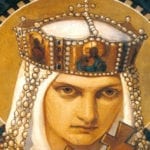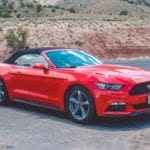 Weird Stuff
Weird Stuff  Weird Stuff
Weird Stuff  Our World
Our World 10 Ways Your Christmas Tree Is More Lit Than You Think
 Movies and TV
Movies and TV The 10 Coolest Stars to Set Sail on The Love Boat
 History
History 10 Things You Didn’t Know About the American National Anthem
 Technology
Technology Top 10 Everyday Tech Buzzwords That Hide a Darker Past
 Humans
Humans 10 Everyday Human Behaviors That Are Actually Survival Instincts
 Animals
Animals 10 Animals That Humiliated and Harmed Historical Leaders
 History
History 10 Most Influential Protests in Modern History
 Creepy
Creepy 10 More Representations of Death from Myth, Legend, and Folktale
 Technology
Technology 10 Scientific Breakthroughs of 2025 That’ll Change Everything
 Weird Stuff
Weird Stuff Ten Bizarre Facts About The Doge Meme
 Our World
Our World 10 Ways Your Christmas Tree Is More Lit Than You Think
 Movies and TV
Movies and TV The 10 Coolest Stars to Set Sail on The Love Boat
Who's Behind Listverse?

Jamie Frater
Head Editor
Jamie founded Listverse due to an insatiable desire to share fascinating, obscure, and bizarre facts. He has been a guest speaker on numerous national radio and television stations and is a five time published author.
More About Us History
History 10 Things You Didn’t Know About the American National Anthem
 Technology
Technology Top 10 Everyday Tech Buzzwords That Hide a Darker Past
 Humans
Humans 10 Everyday Human Behaviors That Are Actually Survival Instincts
 Animals
Animals 10 Animals That Humiliated and Harmed Historical Leaders
 History
History 10 Most Influential Protests in Modern History
 Creepy
Creepy 10 More Representations of Death from Myth, Legend, and Folktale
 Technology
Technology 10 Scientific Breakthroughs of 2025 That’ll Change Everything
10 Historic Car Races that shaped Motor Racing
Motor racing dates back to the days of the early motor car itself. Back then, however, it wasn’t motor racing as we know it today. There were cars which were far from sophisticated. They were huge gas guzzlers and low on power. They were unreliable and would break down at any time. They even lacked bare essentials like the windscreen, and a proper cockpit. The drivers were fearless and ambitious young men, who were willing to push their machines to the limit for that elusive glory and satisfaction. As motor-racing evolved, it witnessed some dramatic changes, came under legal restraints and today, every race has a governing body which lays down strict rules and regulations.
The list that follows features ten legendary races, in chronological order, which were milestones in this fascinating story of evolution.
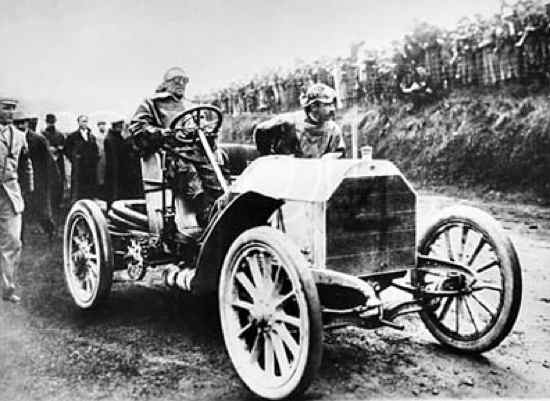
The first international race series in history was the brain child of the eccentric James Gordon Bennett Jr, millionaire owner of the New York Herald. In 1899, Gordon Bennett offered a trophy to the Automobile Club de France, to be raced for annually by the automobile clubs in the various European countries. The conditions for entering demanded that every part of a competing vehicle had to be produced in the country that it represented, including the wheels. The first race, in 1900, was held from Paris to Lyon, and won by the Frenchman Fernand Charron, driving a Panhard-Levassor. Of the six races held till 1905, four of them were of the sprint (city to city) format, and the ones in 1903 and 1905 were circuit racing, held at Athy in Ireland, and Circuit d’Auvergne in France. This was also the earliest record of organised circuit racing, that would later (after 1905) develop into the Grand Prix. France was the most successful country at the Gordon Bennett races, clinching four of the six victories. The remaining two were won by a British Napier (in 1902) and a German Mercedes (in 1903).
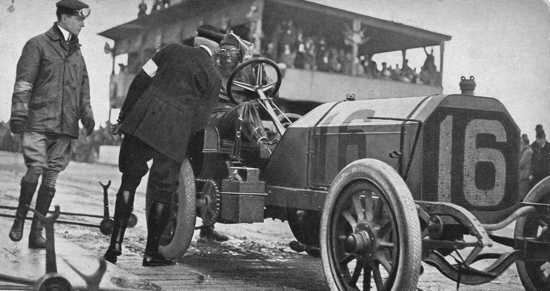
While numerous independent racing series were mushrooming in Europe in the first decade of the 20th century leading to better European motor car technology and design, William Kissam Vanderbilt Jr, an American auto-enthusiast wanted the same to happen in his country. He therefore founded the Vanderbilt Cup, in 1904. It was an international race event, open to all countries across the world. The announcement of the race, however, was riddled with politics and legal issues, with people trying to prevent it from happening, but Vanderbilt prevailed, and the Vanderbilt Cup became the first definitive trophy in American auto racing history. The races were held on Long Island, and the early ones, from 1904 to 1910, were some of the most exciting races of the time. The Vanderbilt Cup also saw the rise to glory of some of the earliest successful racing cars, like the Locomobile and the Lozier. The venue of the Vanderbilt Cup was shifted from Long Island to Wisconsin in 1912, Santa Monica, and later San Francisco till 1916, when it was stopped owing to America joining the First World War. It was later revived however, in 1936, when Vanderbilt’s nephew, George Washington Vanderbilt III, sponsored a 300 mile race at the newly built Roosevelt Raceway. Lack of American competition, and a boring race format however, played spoilsport and it was withdrawn after only two years of revival. The next Vanderbilt Cup was held in 1960, and it stayed till 1968, eventually being merged with the Bridgehampton Sports Car Races.
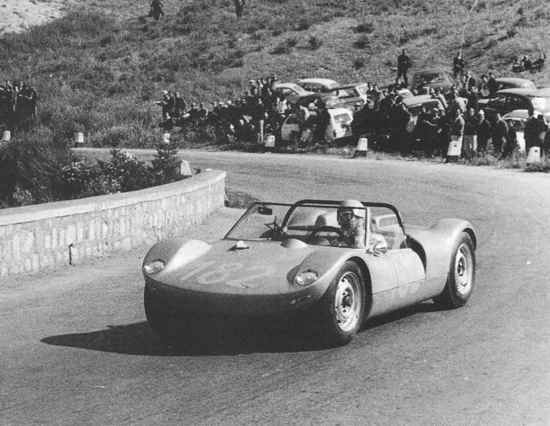
One of the oldest endurance road racing events, the Targa Florio was founded in 1906, by Italian race driver Vincenzi Florio. The race was held around a 72 kilometer circuit, the Circuito Piccolo delle Madonie, around the Italian mountains surrounding the city of Sicily. The first Targa Florio covered 3 laps, through treacherous tracks and mountainous curves, at heights that witness frequently changing and difficult climate. Alessandro Cagno won the inaugural race in 1906. By the mid-1920s, the Targo Florio was the one of the biggest races in Europe, as neither the 24 Hours of Le Mans nor the Mille Miglia had been established then.
The Targa was brought under the FIA World Sportscar Championship in 1955, and its success continued to rise. It became an arena where racing greats from all across the world came together to challenge great Italian drivers. So the Targa Florio saw neck and neck competition between the likes of Juan Manuel Fangio and the Briton, Stirling Moss, against Italian champions Tazio Nuvolari and Alfieri Maserati. The race as an international event saw the last rays of the sun in 1973, when it was won by a Porsche 911 prototype. It continued till 1977, as a national event, when a fatal crash resulted in it being stopped. The convertible version of Porsche’s classic 911 was named the Targa owing to their success in the Targa Florio.
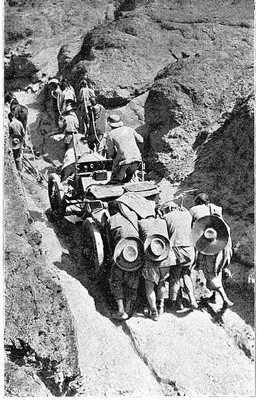
The idea for most famous of all vintage car races came from a challenge published in the Paris Newspaper, Le Matin, “What needs to be proved today is that as long as a man has a car, he can do anything and go anywhere. We ask this question of car manufacturers in France and abroad: Is there anyone who will undertake to travel this summer from Peking to Paris by automobile? Whoever he is, this tough and daring man, whose gallant car will have a dozen nations watching its progress, he will certainly deserve to have his name spoken as a byword in the four quarters of the earth….”
The race, that was to span over two continents and a distance of fifteen thousand kilometers, was, simply put, unimaginable in a time when people still doubted automobiles to be a replacement for horse drawn carriages. There were forty entries however, out of which only five were enthusiastic enough to ship their cars to Peking (presently, Beijing). There was one Dutch Spyker, one French Contal 3-wheeler, two French DeDion and one Italian 120 hp Itala, driven by Prince Scipione Borghese.
The race followed a telegraph route and each car had one journalist as a passenger, who would be able to cover the race from each car. The remote areas of Asia, that had never seen motor travel before, proved to be a grueling inhibition. The crews met with a variety of challenges and difficulties. The Itala for example, fell through a wooden bridge. Some of the cars had to be hauled through difficult terrain using ropes. They got stuck in quicksand. Some went along spluttering and coughing, having been refueled with benzene. The Contal 3 wheeler got grounded by the vast Gobi desert and quit. The crew were, luckily, found and saved by a group of locals.
In the end, after months of swashbuckling heroics, the cars lumbered into Paris. Borghese’s Itala was in the lead, days ahead of the Dutch Spyker, in second position.
This race was a turning point in the story of the automobile. It dispensed all myths about motor cars, and proved to the world that cars had come to stay. The race reached a legendary status when it was re-enacted a number of times over the years, including a recent enactment involving 126 classic vintage cars to celebrate its centenary. For as it was, the Peking-Paris Race of 1907 was not just a race; it was the greatest driving adventure of all time.
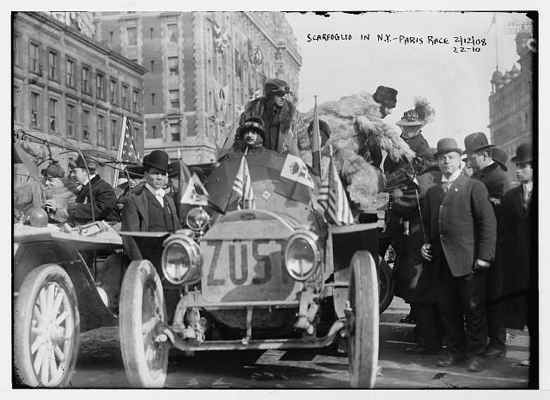
If the Peking-Paris race of the 1907 proved that cars had come to stay, the New York-Paris was meant to deal a final death blow to all skeptics of the automobile. It was from Times Square, on a frigid February morning, that the six cars from four different countries took off for the first round-the-world auto contest. The conditions were bad and there were very few paved roads ahead of the drivers, as a result of which they almost always took to straddling the railway tracks on balloon tires, for hundreds of miles, when no road could be found. The initial route was supposed to take them all the way to Alaska and then the cars would be shipped across the Bering Strait on steamers. Unforgiving cold in Alaska made them reroute down through Seattle and then shipped across the Pacific to Yokohama in Japan.
Motoring in Japan was something new, especially in the rural areas. In most places, they were greeted by alien faces who had never encountered a motor car before. From Japan the route rode northward to Vladivostok, in the tundra regions of Siberia. Daily progress was so slow then onwards, that speed was given in feet per hour, as opposed to miles. Eventually, after a grueling drive across three continents, the roads of Europe were a welcome sight. The winner, a US Thomas-Flyer reached Paris on the 30th of July, 4 days behind the German Protos. The Germans were denied victory and given a 30 day penalty for not having gone all the way to Alaska before crossing the Pacific. The winning driver, George Schuster, was later inducted into the automotive Hall of Fame, in 2010.

Billed as the Greatest Spectacle in Racing, the Indy 500 started in 1911, and is still held every year, typically on the last weekend in May. The venue is the perfectly oval Indianapolis Motor Speedway at Indianapolis, in the United States. This race, one of the most prestigious to date, sees some of the highest speeds achieved in circuit racing in the world, with cars virtually flying around, at speeds in excess of 320 kilometers an hour.
Though races had been held at the Indianapolis Motor Speedway before the 500, the first 500 (the figure comes from the total distance covered in miles from start to finish – around 200 laps of the Speedway) was won by Ray Harroun, driving a Marmon Model-32 based Wasp. The result was questioned by other drivers, mostly because Harroun defied rules and did the full race without any riding mechanic, who checked oil pressure and informed when other drivers were coming. The huge prize money ($50,000 in 1912) attracted a lot of countries from around the world, including established European marques like Fiat and Peugeot. Over the years, the Indy 500 evolved and, following European standards, engine size was limited to 3 liters in 1920-22, 2 liters for 1923-25 and 1.5 liters in 1926-29.
After the two world wars, the Indianapolis Motor Speedway’s future looked bleak. Abandoned and choked with weeds with the brick-surfaced track seemingly beyond repair, professional racing seemed impossible. It was local entrepreneur, Tony Hullman, who revived the track, resurrected the Indy 500 and helped usher in the golden age of post-war American motor racing.
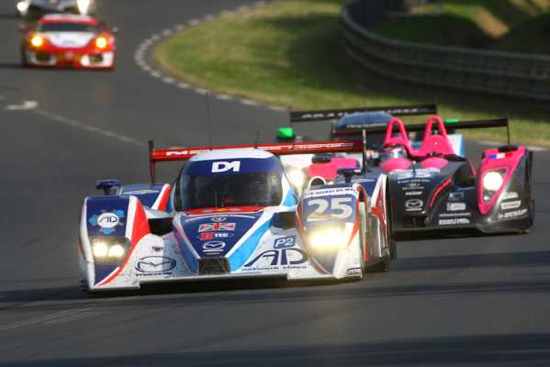
The prestigious 24 hours of Le Mans is the oldest, and the most famous endurance race in the world that is still held every year. Originally held to test the efficiency and reliability of production cars at the Sarthe Circuit in Le Mans in France, this race has, over the years, seen almost every famous marque participate. The Le Mans has also been a seat for bitter personal rivalries and professional competition, like no other race in this world. The 1960s were the most notable in this regard. With Henry Ford frustrated at his unsuccessful attempt to buy the Italian stallion, Ferrari, he vowed to defeat Ferrari on the race track, and made huge investments to develop superior race cars. And, indeed, the 24 Hours of Le Mans did see some of the greatest racers throughout the ages. Some prominent ones included the Ford Mark IV, the Ferrari 250 GTO, the Porsche 917 and the Chevrolet Corvette.
The 24 Hours of Le Mans also saw a new type of race start, called the Le Mans start wherein cars were lined along the pit wall and, at the wave of the flag, drivers would rush to their cars, get in, start the engines, reverse and begin the race, all without any assistance. This mad scramble in the beginning of each race became an iconic aspect of this race, which, however, was later discarded, on grounds of drivers going around without fastening their safety harnesses!
The present 24 hours of Le Mans sees the cars covering more than 5000 kilometers from start to end. That is approximately eighteen times the length of an average Formula 1 Grand Prix.
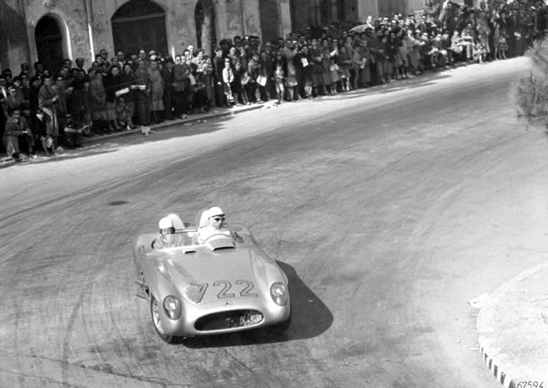
The Mille Miglia was probably the last of the legendary road races. It was started in 1927 by Italian car lover Count Aymo Maggi, who himself participated in the inaugural edition in his Isotta Fraschinni 8A SS. Starting and finishing at Brescia, the Mille Miglia covered a thousand no-compromising miles of the Italian countryside. In spite of showcasing some of the finest Italian granturismo brands, like the Maserati, the Isotta, the Fiat, the Ferrari and the Alfa Romeo, the race was cancelled in 1957 following a fatal crash that killed Ferrari driver, Spaniard Alfonso de Portago, his navigator, Edmund Nelson and nine spectators, including five children.
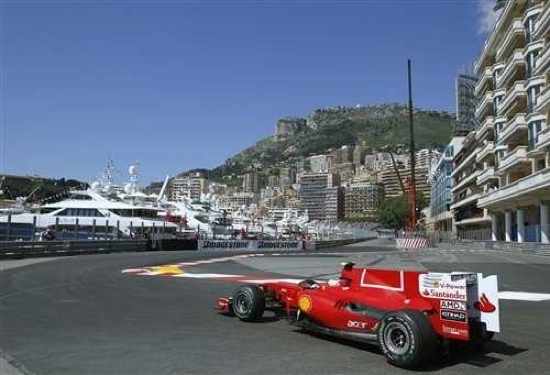
The most popular and the most prestigious event on the Formula 1 calendar every year, the Monaco Grand Prix, along with the 24 Hours of Le Mans and the Indy 500, is informally called the “Triple Crown of Motorsport”. The Circuit de Monaco, which hosts this Grand Prix since 1929 has also been called “an exceptional location of glamour and prestige”.
Before 1929, Grand Prix circuits had been located in the countryside or on purpose built racetracks. The first Monaco Grand Prix brought in a new dimension to the sport, because it was run round the streets of the capital, Monte Carlo, on a tight, twisting and narrow course, which also included a tunnel. Maneuverability of the cars was put on premium for this course. Early editions of the Monaco Grand Prix were dominated by the agile Bugattis, which later succumbed to the mightier Alfa Romeo 8C Monza, in the 1930s.
Ayrton Senna, referred to by many as the greatest racing driver of all time, won the most number of times at Monaco, with six victories, including five consecutive wins between 1989 and 1993.
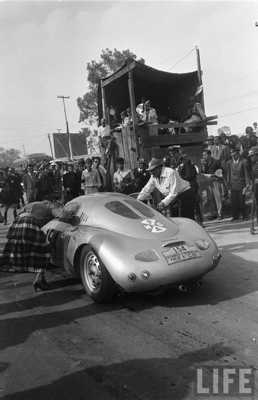
The Carrera Panemericana was yet another historic road race through the roads of Mexico, originally started to advertise and draw attention to the newly completed Mexican section of the Panamericana Highway. The first race was a nine-stage, five-day event that ran nearly 3300 kilometers along the entire length of the highway, panning Mexico from north to south. After two years, however, the race was touted as the most dangerous race ever, owing to the difficult course, the sharp bends and extreme changes in elevation … from 328 feet above the sea level at some places to 10,500 feet at some others. Carburettors on the cars had to be adjusted to deal with the thinning air at higher altitudes. The first edition of the race was won by Hershel McGriff and Ray Eliot, driving an Oldsmobile. Other recognizable cars that were successful at various stages of the Carrera Panamericana were the Mercedes Benz “Gullwing” 300 SL and the Porsche 550 Spyder. Porsche enjoyed a lot of success in these races, clinching many of the class level wins, which was testament to the reliability of the VW Beetle, many of the Porsches drawing ancestry from the same. Finally after a fateful crash in Le Mans in 1955, the Carrera Panamericana and all other such road races were cancelled. It was resurrected again, however, in 1988, by Eduardo de León Camargo, and it still survives to this date.
Porsche named two of their cars after their success as a team in this race, the Carrera and, later, the Panamera tourer.
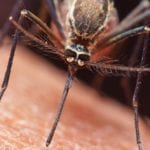

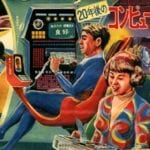

![Top 10 Haunting Images Of Historic Tragedies [DISTURBING] Top 10 Haunting Images Of Historic Tragedies [DISTURBING]](https://listverse.com/wp-content/uploads/2020/05/33758v-150x150.jpg)

